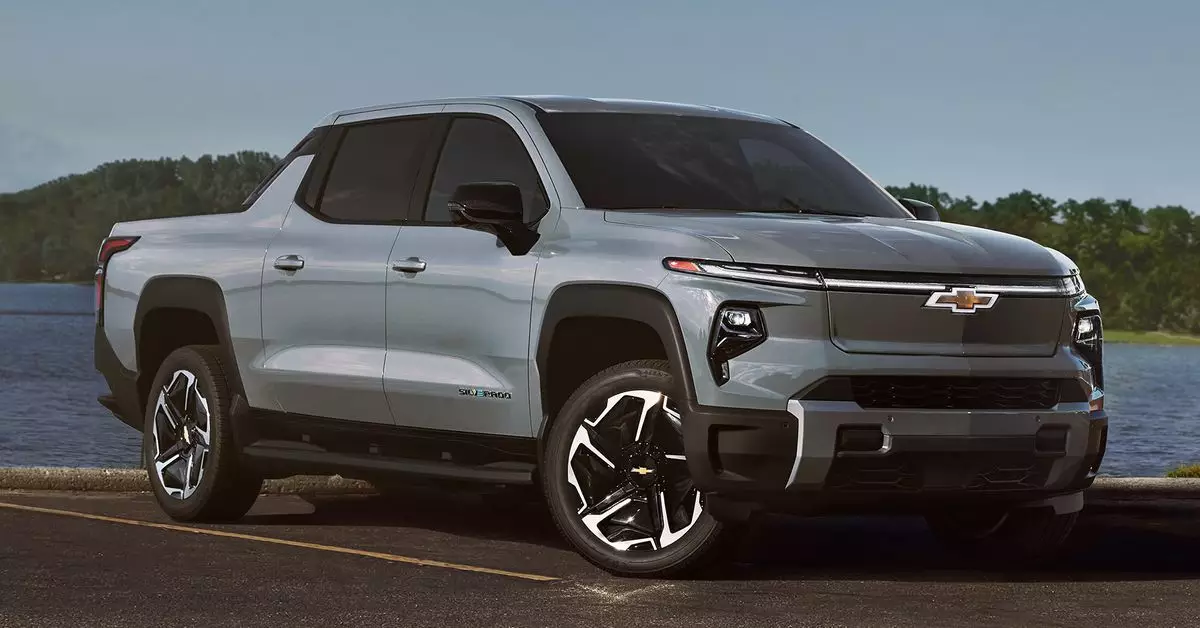As the electric vehicle (EV) market continues to evolve, automakers are adjusting their strategies to capture a broader range of consumers. Chevy’s 2025 Silverado EV represents a bold move in this competitive sector by offering a variety of options to meet varying consumer needs. With a focus on affordability and functionality, the new lineup promises to reshape perceptions of electric trucks.
One of the standout features of the 2025 Silverado EV is the introduction of the standard range Work Truck (WT) version, priced at an attractive $57,095. By making electric trucks more accessible, Chevy aims to appeal to a diverse audience, including tradespeople and businesses that require reliable utility vehicles. This strategy seems poised to capture a segment of the market that may have previously been hesitant to adopt EV technology.
Chevy’s positioning of the WT also highlights an important aspect of modern vehicle pricing: the dealer-controlled final cost. While the stated price includes destination charges, additional dealership fees could considerably alter the overall expense for consumers, leaving a degree of uncertainty. Nonetheless, the anticipation surrounding the range estimates for this model adds an element of excitement, which may further incentivize buyers.
Gone are the days when consumers had minimal choices in electric truck configurations. The 2025 Silverado EV offers several variants, including a mid-tier version that starts at $89,395 with a shorter EPA range of 390 miles. This addition reflects Chevy’s competitiveness in a market that Ford has also tapped into with its own variety of models.
Indeed, comparing the Silverado EV to Ford’s F-150 Lightning reveals interesting dynamics in electric truck offerings. Ford’s “Pro” version is designed with affordability in mind, starting at $54,995, but with a limited range of 240 miles. In contrast, Chevy provides more robust alternatives, like the new LT model starting at $75,195, boasting 408 miles per charge, essentially positioning itself as the stronger contender for consumers seeking both performance and practicality.
Performance metrics are crucial for any truck enthusiast, and Chevy does not disappoint. The Silverado EV LT packs a punch with 645 horsepower and a substantial towing capacity of 12,500 pounds. These figures serve to underscore that electric vehicles are not just designed for eco-conscious consumers but also for those needing robust performance capabilities.
However, a notable omission in the current discourse on charging is Chevy’s silence on the inclusion of the North American Charging Standard (NACS) plug for 2025, which could impact the convenience of charging for owners. Moreover, the Silverado EV’s ability to charge at DC speeds of up to 300kW positions it favorably against competitors, ensuring that users can spend less time plugged in and more time on the road.
For tech-savvy consumers, the allure of advanced features like SuperCruise will necessitate an additional financial commitment. While the prospect of a more luxurious, semi-autonomous driving experience appeals to many buyers, it also raises the question of whether mainstream consumers may be deterred by additional costs. The balance between affordability and advanced features will likely play a critical role in the overall success of the Silverado EV.
The unveiling of the 2025 Silverado EV marks a pivotal moment for both Chevy and the entire electric vehicle industry. By prioritizing affordability, utility, and performance, the Silverado EV is poised to attract a wider audience and challenge traditional views on what an electric truck can offer. As we look towards the future, the evolving landscape of electric vehicles continues to promise exciting developments and opportunities for consumers across the board.

